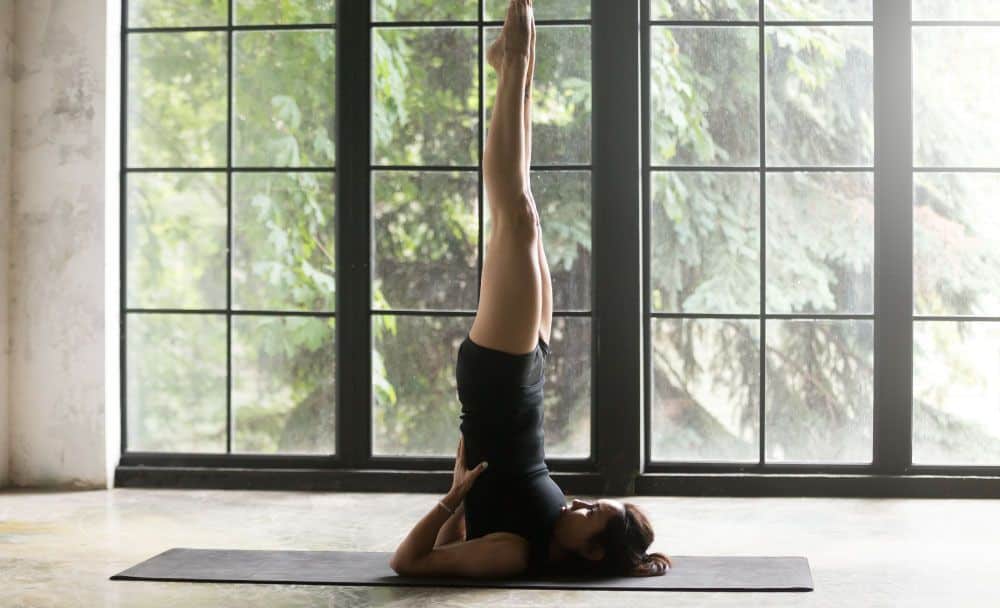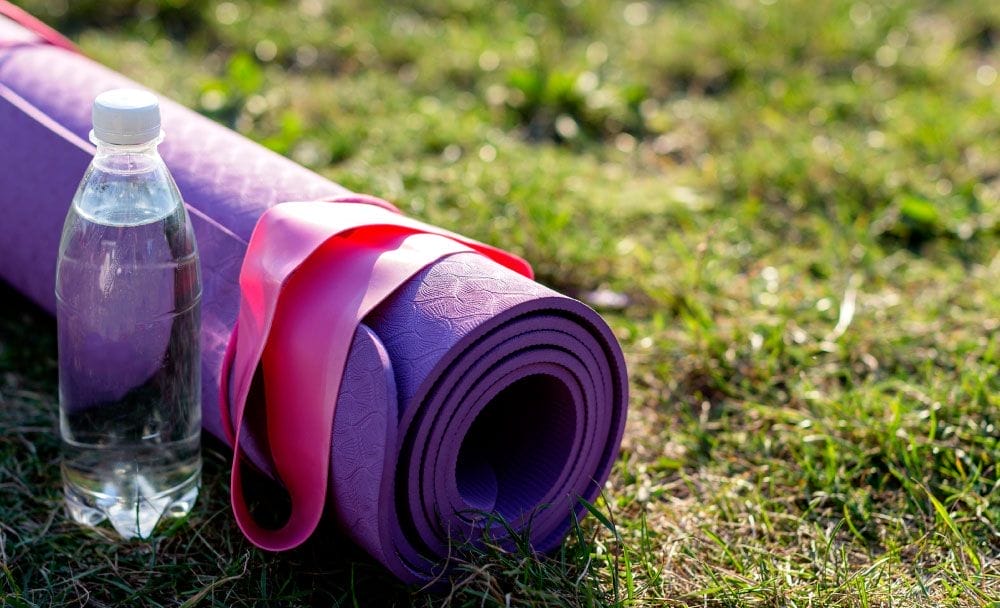In the realm of yoga, where ancient wisdom meets modern-day wellness, one practice stands out for its transformative power: Sarvangasana, also known as the Shoulder Stand. This revered asana has been cherished for centuries due to its profound physical, mental, and spiritual benefits. As we delve into the world of Sarvangasana, we discover a posture that invigorates the body and brings harmony to the soul.
This article explores the numerous advantages that Sarvangasana offers. Let us learn how to master this pose and experience the harmonizing effects it can bring to our physical, mental, and spiritual selves.
What is Sarvangasana?
Sarvangasana is a prominent yoga pose cherished for centuries for its holistic benefits. In Sanskrit, “Sarvanga” translates to “all limbs” or “whole body,” indicating the comprehensive nature of this posture. As the name suggests, Sarvangasana involves balancing the entire body on the shoulders, with the head and neck resting on the mat or a folded blanket.
This inverted pose offers a unique perspective on our physical and mental states, providing a profound sense of grounding and rejuvenation. While it may seem challenging at first, Sarvangasana can become an integral part of your yoga routine with practice and guidance.
Sarvangasana is not merely a physical posture; it is a complete practice that engages multiple muscle groups, stimulates various organs, and stimulates energy flow throughout the body. It offers a comprehensive workout for the entire system, from head to toe, providing a refreshing sense of vitality.
What are the health benefits of Sarvangasana?
Sarvangasana offers a treasure trove of health benefits that extend far beyond its physical aspects. Let’s explore some of the remarkable health benefits that Sarvangasana has to offer:
- Improved circulation
In Sarvangasana, as the body is inverted, blood flow is directed towards the upper body, particularly the brain. This increased blood circulation nourishes the brain cells, enhances mental clarity, and improves focus and concentration. Additionally, it stimulates the thyroid gland, which regulates metabolism, leading to improved energy levels and overall vitality. [1]
- Enhanced strength and flexibility
Sarvangasana engages multiple muscle groups simultaneously, including the core, shoulders, arms, and legs. Regular practice of this pose strengthens these muscles, promoting stability, balance, and overall body strength. [1]
- Revitalized digestive system
By compressing the abdominal organs in Sarvangasana, digestion is stimulated, and metabolic functions are improved. This pose aids in relieving constipation and other digestive discomforts. [1]
- Treats hypertension
This pose facilitates improved blood circulation and oxygenation to the brain and other vital organs by inverting the body. The increased blood flow helps regulate blood pressure levels, promoting a healthier cardiovascular system. [2]
- Improves blood supply to facial tissues
The increased blood circulation nourishes the skin, giving it a fresh glow and improved vitality. [1]
Steps for Sarvangasana pose
While Sarvangasana, the Shoulder Stand, may seem daunting initially, with proper guidance and practice, you can gradually master this empowering pose. Here, we will guide you through a step-by-step process to help you achieve the correct alignment and experience the full benefits of Sarvangasana: [3]
- Preparation
Begin by finding a calm and quiet space for your practice. Place a folded blanket or yoga mat on the floor to support your shoulders and neck.
- Lie on your back
Start by lying flat on your back and arms alongside your body, palms facing downward. Take deep breaths to relax your body.
- Bend your knees
Bend your knees gently and place your feet flat on the floor, keeping them hip-width apart.
- Lift your legs
As you inhale, press your palms firmly and lift your legs, bringing them towards your chest.
- Support your lower back
Place your hands on your lower back. Support your lower back with hands and elbows, creating a stable base for the pose.
- Extend your legs upward
Slowly straighten your legs, lifting them towards the ceiling. Keep your legs together and engage your thigh muscles. If needed, you can gently push against a wall for support.
- Balance on your shoulders
Once your legs are fully extended, use your hands to support your lower back and lift your entire body off the ground.
- Find stability and alignment
Have a straight line from shoulders to your feet. Keep your chin tucked slightly toward your chest to protect your neck. Engage your core muscles to maintain stability.
- Breathe and hold the pose
Stay in Sarvangasana for 5 to 10 deep, mindful breaths. Focus on maintaining a steady breath and a relaxed state of mind.
- Release the pose
To come out of Sarvangasana, gently bend your knees, lower your legs, and slowly roll your spine back down to the mat. Take a moment to rest in Savasana (Corpse Pose) and allow your body to relax.
Precautions to keep in mind for Sarvangasana
While Sarvangasana offers numerous benefits, it is crucial to approach this pose with care and mindfulness. Here are some precautions to to ensure a safe and effective practice:
- To be done under the guidance of a certified trained yoga practitioner
If you have existing medical conditions, consult a healthcare professional or a certified experienced yoga teacher before attempting Sarvangasana.
- Warm up adequately
Before practicing Sarvangasana, warm your body with gentle stretches and yoga asanas. It helps prepare your muscles, joints, and spine for the inversion and reduces the risk of strain or injury.
- Avoid Sarvangasana during menstruation and pregnancy
Women should refrain from practicing Sarvangasana during menstruation, as it can interfere with the natural downward flow of energy.
- Modify or use props when needed
Consider using props to support your practice if you are a beginner or have difficulty maintaining proper alignment. Placing a folded blanket under your shoulders or using a yoga block against a wall can provide additional stability and comfort.
- Listen to your body
Understand how your body feels during the practice. If you experience pain, discomfort, or strain, gently release the pose and seek guidance from a qualified instructor.
- Avoid excessive neck pressure
Take care to avoid excessive pressure on the neck while in Sarvangasana. Keep your neck aligned with your spine.
- Gradually increase duration and intensity
Start with shorter durations and gradually increase the time spent in Sarvangasana as your strength and comfort level improve.
FAQs
- Can anyone practice Sarvangasana?
Individuals of different levels of yoga experience can practice Sarvangasana. However, it is advisable to learn and practice under an experienced yoga instructor, especially for beginners.
- What is setu bandha sarvangasana
Setu Bandha Sarvangasana, or Bridge Pose, is a yoga asana that involves lifting the hips off the mat while the feet and shoulders remain grounded. “Setu Bandha” translates to “bridge formation” in Sanskrit, referring to the shape that the body resembles in this pose.
Conclusion
Incorporating Sarvangasana into your yoga practice can be a transformative journey that benefits your physical and mental well-being. This revered pose offers improved circulation, enhanced strength, and flexibility, revitalized digestion, a calm nervous system, and alleviates respiratory issues.
Following the step-by-step instructions and taking the necessary precautions, you can safely and effectively practice Sarvangasana, unlocking its profound advantages. Embrace the power of this ancient pose and experience its harmonizing effects on your body, mind, and soul.
Disclaimer:
The information provided here is not intended to replace professional advice or treatment.


















